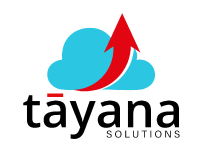Unlocking Financial Insights: Combining Revenue and Margin in a Single Chart
This content explains how to overcome the limitation of Acumatica in displaying revenue and margin in a single chart, using a workaround that connects Acumatica to Excel.
(a) Challenges
- Many businesses struggle to make sense of their financial data, especially when using platforms like Acumatica. A common frustration is the inability to view both revenue and margin in a single chart directly within Acumatica.
- While revenue figures might appear promising, it is crucial to also consider profit margins. A product could have high sales but low margins, potentially leading to financial losses.
- A combined view of revenue and margin is essential for making informed decisions about pricing, production and product focus. The lack of this combined view in Acumatica makes it difficult for businesses to identify areas where they might be losing money.
- Users want to create a management dashboard with a chart that has revenue and margin in a single column chart. But this is not directly possible in Acumatica.
(b) Solution
- The proposed solution involves creating a bridge to Excel to overcome Acumatica’s limitations. This is achieved by using a Generic Inquiry (GI) within Acumatica to extract relevant data.
- A Generic Inquiry is like a custom report builder, that allows users to select specific data points such as revenue and margin. This data is then compiled into a table.
- To move this data from Acumatica to Excel, OData is used. OData is a language that enables different systems to communicate. The GI report is translated into OData, which Excel can then read.
- Once the data is in Excel, users can create custom charts, like a column chart displaying revenue and margin in a single column. This creates a custom data pipeline from Acumatica to Excel.
Benefits/Advantages
- The combined view of revenue and margin allows businesses to quickly identify products with low margins despite high sales. This information enables adjustments to pricing, production and product strategies.
- This method allows for the combination of Acumatica data with other data sources, such as market trends, competitor pricing and economic forecasts. This enables proactive decision-making, forecasting and identification of missed opportunities.
- By using a custom data pipeline that moves data to Excel, businesses are not limited by Acumatica’s charting capabilities. This flexibility allows for more detailed and insightful data analysis.
- The approach provides a powerful way to uncover hidden treasures in the data, enabling better insights and decision-making. A manufacturing company, for example, was able to identify a product line with low margins and adjust pricing accordingly.
- Tayana Solutions can help set up this solution for businesses seeking clearer financial insights and improved data analysis. Balaji D, a Principal Consultant at Tayana Solutions, has 13 years of experience in solving these kinds of ERP problems. He has handled over 500 cases and has expertise across all Acumatica editions. Tayana Solutions is the largest Services Partner with Acumatica Cloud ERP. They help Acumatica partners and customers with implementation, customization and support.
